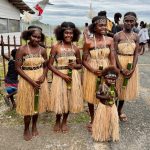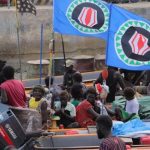During our recent voyage to the remote island of Tristan da Cunha, the most isolated inhabited places on Earth, we had the rare opportunity to visit something few outsiders ever see: the CTBTO radionuclide monitoring station, officially known as RN68, which “sniff” the atmosphere for radioactive particles or noble gases released by a nuclear explosion.
Table of Contents
Thanks to a chance encounter on the island during our Grand South Atlantic Cruise in April 2025, YPT tour leader Morgan and astrophysicist Eduardo Rubio were granted a rare, behind-the-scenes access to this fascinating piece of global scientific infrastructure. Tucked among volcanic peaks and windswept grasslands, we discovered equipment quietly operating in one of the world’s most remote outposts, not for local utility, but in service of global peace.
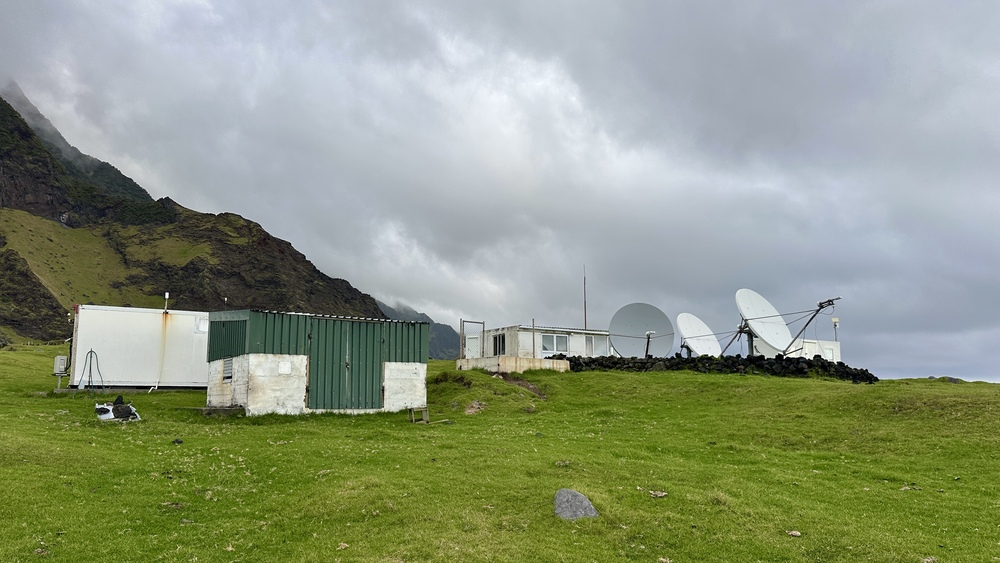
What is the CTBTO?
The Comprehensive Nuclear-Test-Ban Treaty Organization (CTBTO) is the international body responsible for verifying compliance with the Comprehensive Nuclear-Test-Ban Treaty (CTBT), a global agreement that bans all nuclear explosions, whether for military or civilian purposes.
The roots of the treaty trace back to the Cold War era, when atmospheric nuclear tests were contaminating the environment and raising global alarm. In 1963, the Partial Test Ban Treaty banned tests in the atmosphere, outer space, and underwater, but it wasn’t until 1996 that the CTBT was opened for signature, aiming to prohibit all nuclear test explosions.
To verify the treaty, the CTBTO began building a powerful global monitoring network, the International Monitoring System (IMS), made up of:
- Fifty primary and 120 auxiliary seismic stations listening for underground blasts
- Eleven hydroacoustic stations tracking underwater detonations
- Sixty infrasound stations that detect low-frequency waves in the air
- Eighty radionuclide stations (like RN68) that “sniff” the atmosphere for radioactive particles or noble gases released by a nuclear explosion
- Sixteen radionuclide laboratories to assist radionuclide stations in identifying radioactive substances.

While the treaty hasn’t formally entered into legal force – due to six key countries not yet ratifying, including Russia, Iran, Israel, the USA and China – the CTBTO’s monitoring system is fully operational. Today, it’s widely seen as one of the most effective arms control tools in existence, and a global early-warning system against nuclear testing.
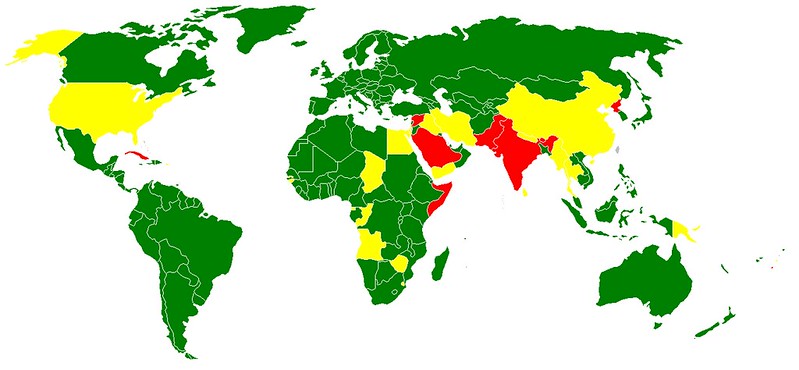
What is Radionuclide Station RN68 on Tristan da Cunha?
Station RN68 is one of the most remote radionuclide monitoring outposts in the entire CTBTO International Monitoring System. Operated under the CTBTO umbrella but maintained in cooperation with local Tristan authorities and technical partners, RN68 is part of the global effort to detect and deter nuclear tests anywhere on the planet.
While the idea of monitoring nuclear explosions from a tiny island in the South Atlantic might seem improbable, it’s exactly what gives RN68 its value. With minimal air pollution and very low background radiation levels, the air above Tristan da Cunha is among the cleanest in the world, making it an ideal environment for detecting even minute traces of radioactive particles drifting in from thousands of kilometers away.
The station itself is compact and unassuming, housed in a weatherproof building with specialized sampling equipment, filtration systems, and telemetry gear, but it’s a critical cog in a much larger machine. RN68 has been part of the IMS network since the early 2000s and contributes continuous environmental data to a centralized repository in Vienna. It’s one of just a handful of CTBTO radionuclide stations in the Southern Hemisphere, and plays an outsized role in ensuring global coverage.
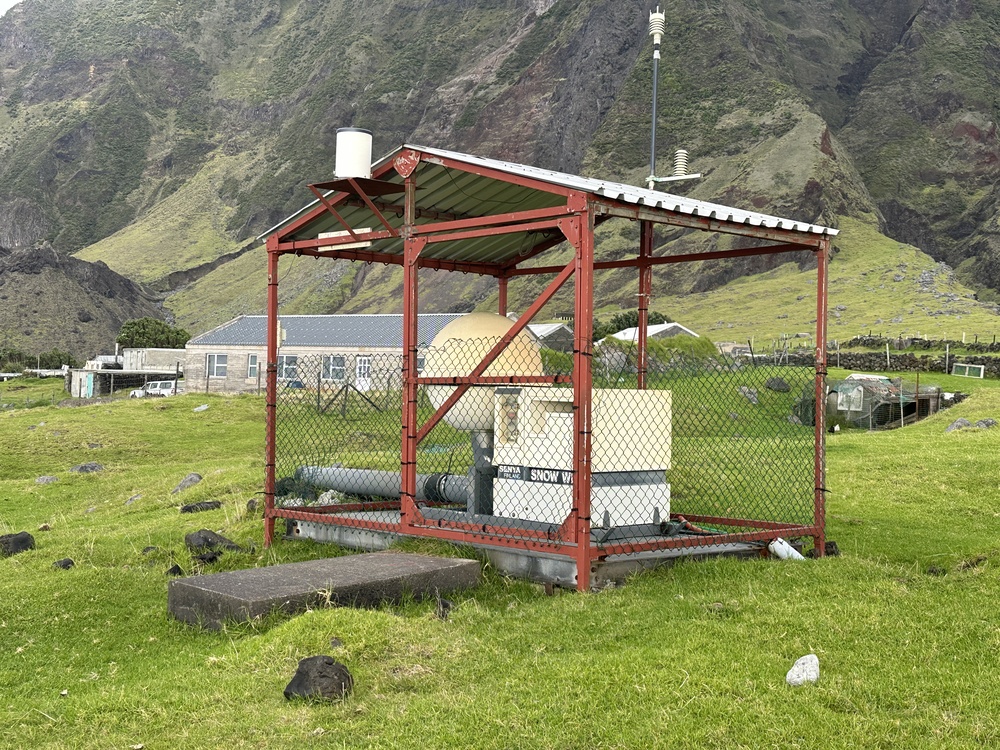
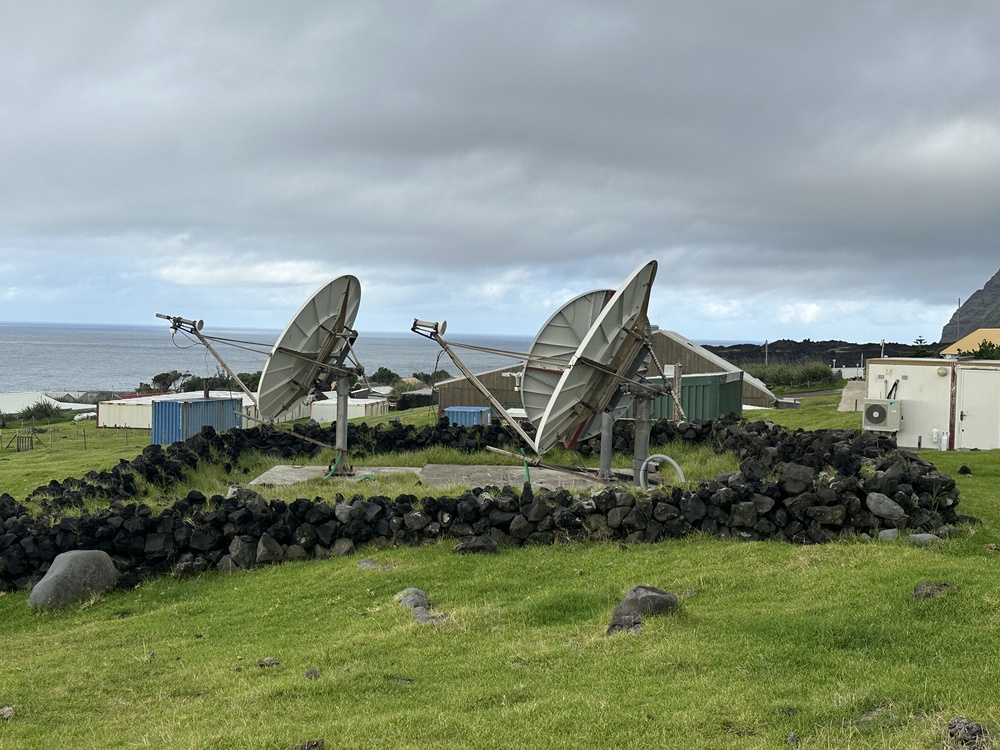
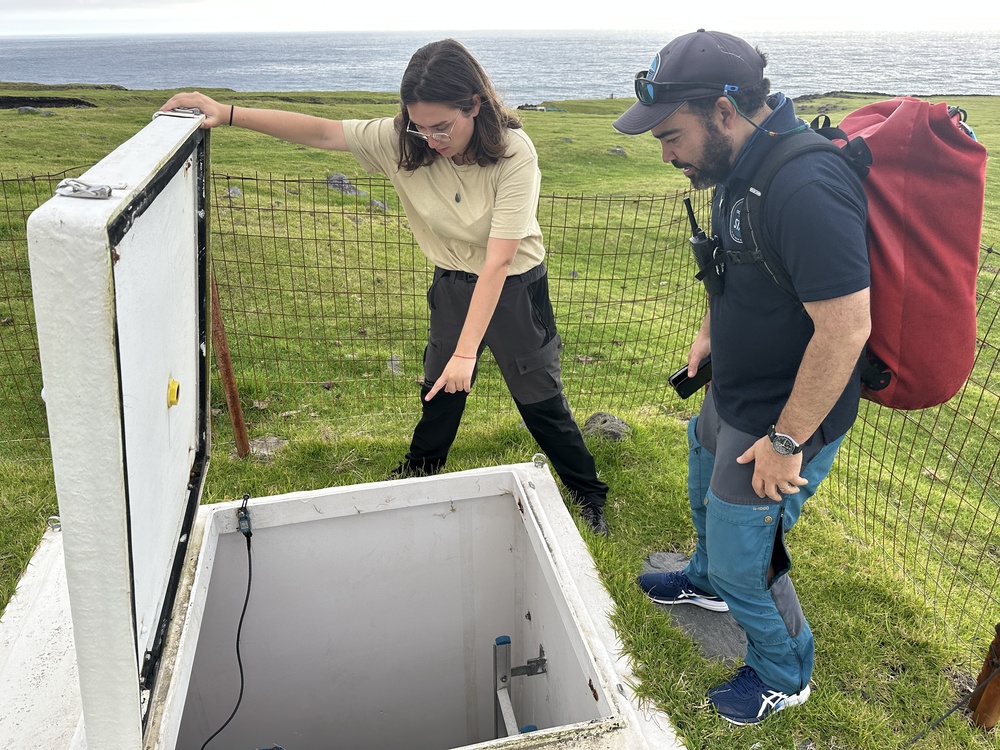
How does it work?
The heart of RN68 is its air sampling unit, which operates continuously, 365 days a year. Here’s how it works:
- Air Collection: A high-efficiency vacuum pump draws large volumes of air through a fine-mesh filter that captures aerosol particles – tiny airborne materials including dust, organic debris, and potentially radioactive elements.
- Filter Handling: Filters are changed every 24 hours and either analyzed on-site or securely sent to one of the CTBTO’s 16 certified Radionuclide Laboratories around the world.
- Gamma Spectrometry: Once analyzed, the filters are examined using gamma-ray spectrometry, a process that identifies radioactive isotopes based on the unique energy signatures they emit. These include isotopes like iodine-131, cesium-137, or barium-140, which are classic markers of a nuclear fission event.
- Data Transmission: All data (whether positive detections or clean readings) are encrypted and transmitted to the CTBTO International Data Centre (IDC) in Vienna, where they’re compared with other stations to create a complete atmospheric radiation map.
- Noble Gas Detection: Some radionuclide stations are equipped with noble gas detectors to look specifically for radioactive xenon isotopes, which are difficult to conceal and are strong indicators of underground nuclear tests.
The entire system is designed for autonomous operation, with minimal on-site intervention beyond filter and battery changes and regular calibration. Someone on Tristan plays a key role in maintaining the equipment and it’s hard to imagine a more isolated job in international security.
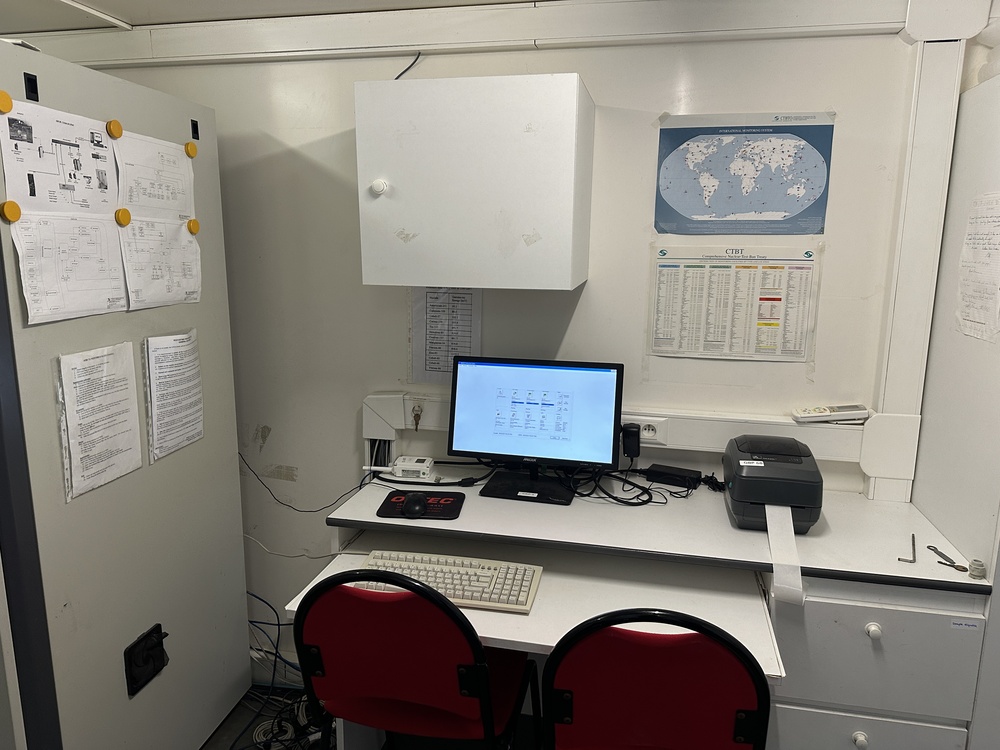
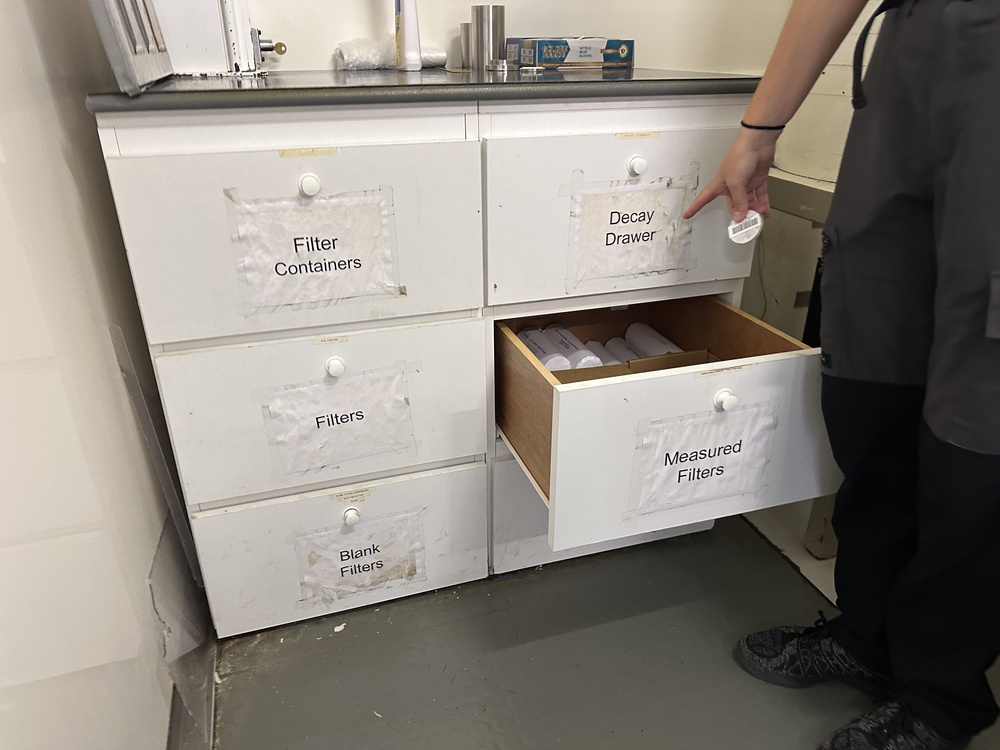
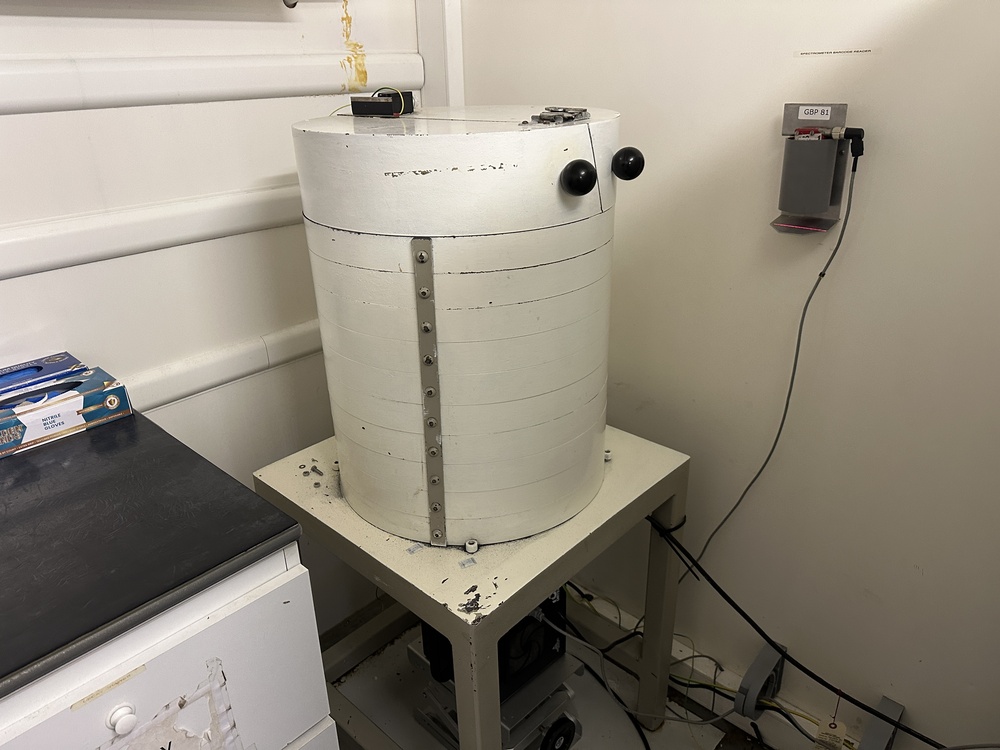
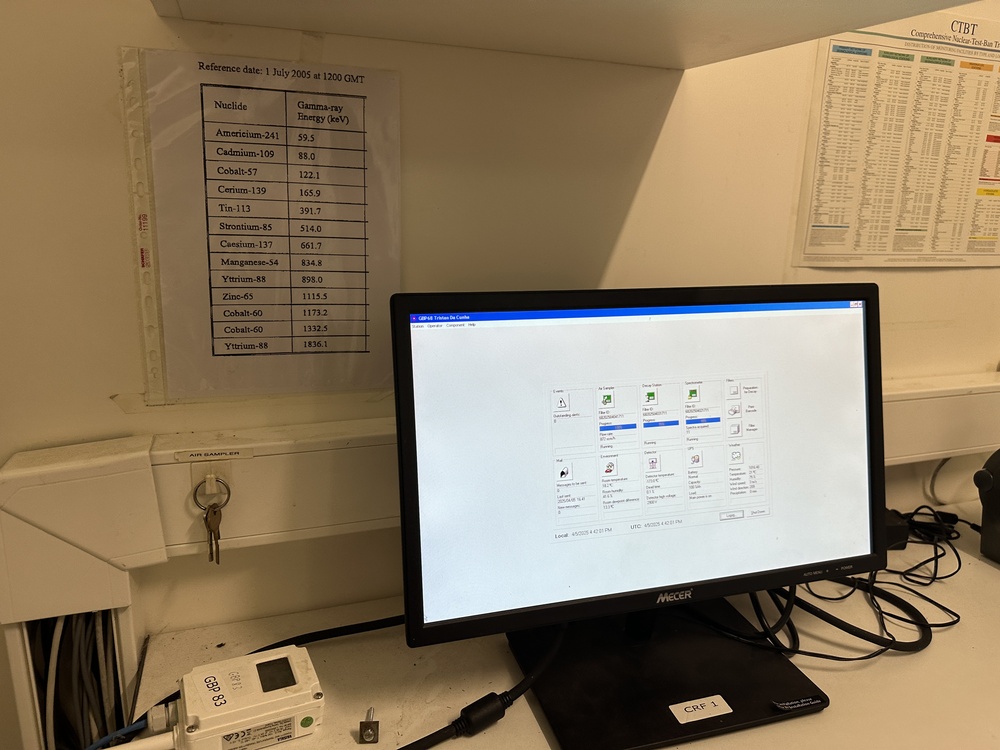
Why is it in Tristan da Cunha?
At first glance, Tristan da Cunha might seem like an odd place to put a high-tech monitoring station. But its remoteness is exactly the point. The CTBTO strategically places stations to maximize global coverage and minimize blind spots. Tristan’s position in the South Atlantic makes it an ideal location, surrounded by ocean and far from industrial interference, it offers clean atmospheric data and fills a major geographic gap in the network.
In global monitoring, every location counts, especially the ones you’d least expect.
The existence of RN68 on Tristan da Cunha shows how seriously the international community takes the challenge of monitoring every corner of the planet.
It also highlights how even the most distant places, with no airport, one village, and a volcanic ridge for a skyline, can play a key role in global peace and security.
Has RN68 ever detected a nuclear test?
While the CTBTO’s International Monitoring System has successfully detected all six confirmed North Korean nuclear tests, there are no publicly reported instances of RN68 itself identifying a test. But that doesn’t make it any less critical. Every station in the IMS contributes to a collective global picture.
If one station picks up a signal, others help confirm or rule out possible sources. And if RN68 records nothing, that silence can be just as useful, helping triangulate the location or exclude false alarms. In short, it’s a vital piece of a much larger puzzle.
Final thoughts at the Edge of the world
We came to Tristan da Cunha expecting rugged isolation, and we found that. As I was walking to the Potato Patches, I thought for a moment “if there was global apocalypse, we’d be the last to know”. But then I remembered RN68, this small, quietly humming piece of global infrastructure that links this volcanic speck of land to the wider world. We would actually be among the first to know!
It’s moments like these that remind us that exploration isn’t just about seeing wild landscapes or reaching remote dots on the map, it’s also about discovering the unexpected connections between the farthest-flung corners of the Earth and the shared systems that hold the world together.
And for us at Young Pioneer Tours, that’s exactly what makes travel truly meaningful.



